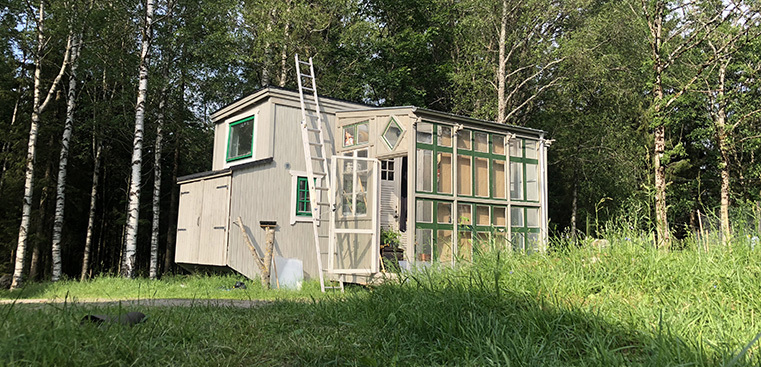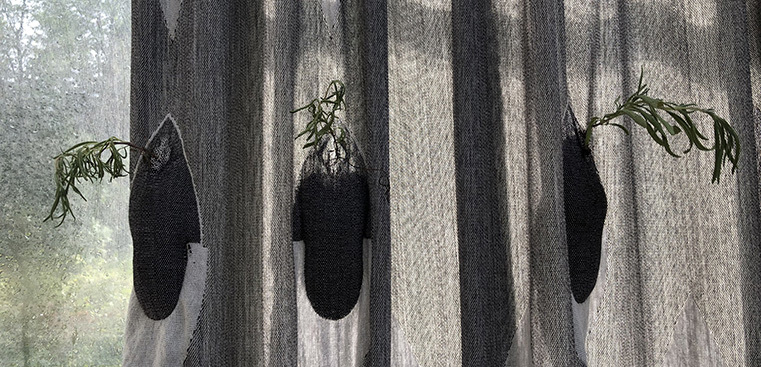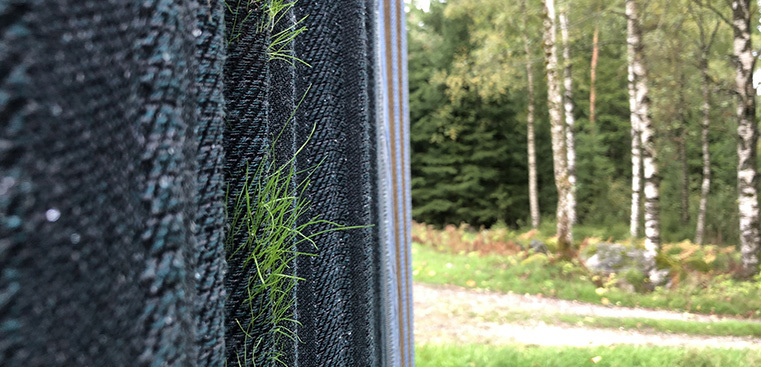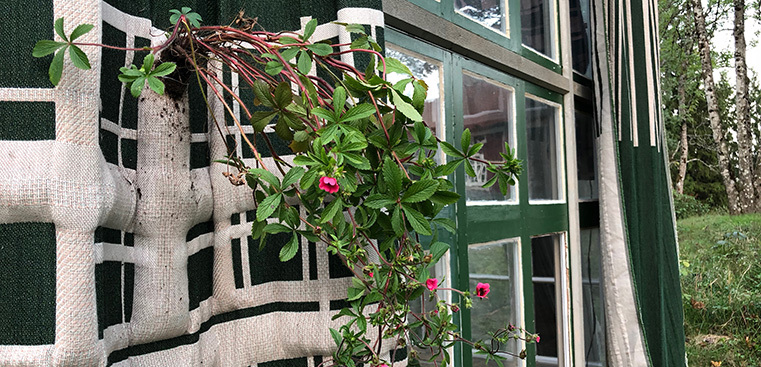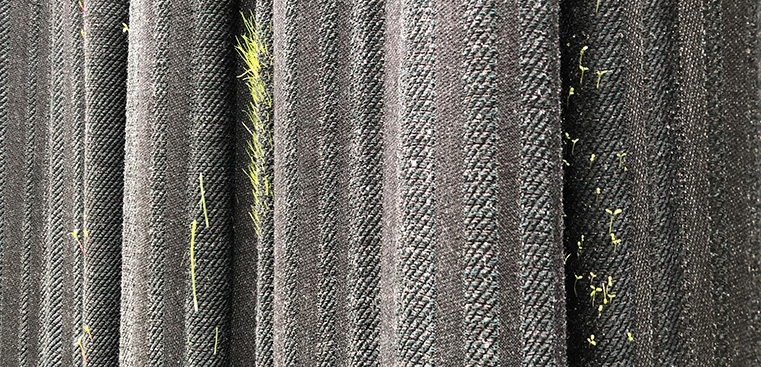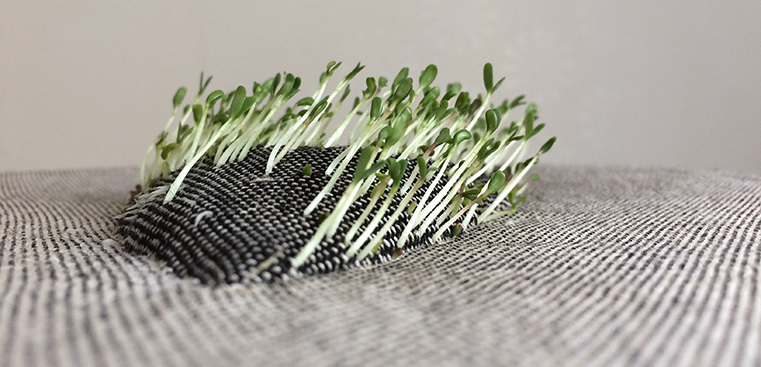Living in a house prototype as an approach to artistic research
2020-03-18
Her interest in sustainable design by linking together architecture, interaction design, and textiles started in Hamburg during her education. Svenja Keune says she always had an interest in the combination of textiles and other materials, but it was in Sweden within her doctoral studies, within the EU project ArcInTexETN, where her work took an interesting turn - instead of using electronics to design adaptive and responsive textile structures, she explored seeds as dynamic materials for textile design.
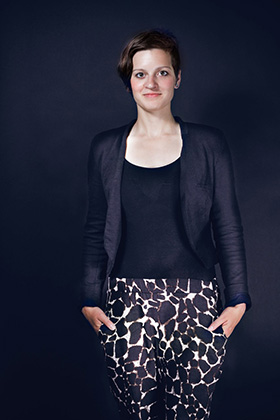 "My research journey was very inspired by living in Sweden, working at the textile company Svensson AB, and by the design context, the environmental crisis, and personal reflections on my own way of life," says Svenja Keune.
"My research journey was very inspired by living in Sweden, working at the textile company Svensson AB, and by the design context, the environmental crisis, and personal reflections on my own way of life," says Svenja Keune.
Plants integrated into textiles
The first part of Svenja Keune's research consisted of integrating plants into textiles and it started during her employment at Svensson AB in Kinna, a well-known textile company with a long history that has two departments; interior textiles and climate screens for greenhouses.
"I decided to situate myself in between the two departments and investigate how they could be brought together – in an artistic and speculative way," says the researcher whose experiments, among other things, consisted of allowing plant seeds to grow through textiles that came to change expression over time.
A more optimal - and vibrant - environment for the experiments than in the lab became available when it came time for the second part of her research: to find living spaces in the borderland between the indoors and the outdoors.
"To that end, I built a house to ‘live my research’ and investigate the consequences of living with textile plant structures," says Svenja Keune, explaining enthusiastically about the wheel-bearing mobile dwelling with greenhouse that is parked in the middle of the forest in Bollebygd and where she has lived and worked since 2018.
"It's been an exciting and rewarding time.”
Methodological frameworks to inspire innovation
As a result of her research, Svenja Keune has developed a methodological framework.
"It's about principles for how to design with seeds and plants – to be able to live closer to nature and develop a greater understanding of the natural environment of which we are a part – and not separate from. As architecture mostly separates us from impressions and experiences from the outdoors, I focused on aspects that can bring them together, to us, or make them possible to experience from the inside.”
Svenja Keune wants to highlight the value of innovation through her efforts.
"I argue that we need to change both the way we design and our way of life.”
Greater diversity is needed in such perspectives, she says, talking about the importance of doing this with greater contact with other organisms; plants, insects, and animals.
"I hope that my work can help inspire other people to experiment with their lifestyle and, above all, I am addressing my research field – and suggesting plants as a dynamic material for textile design.”
In all respects, the newly-qualified researcher wants to make as little personal effect on the environment as possible and is experimenting with alternatives to an electric powered fridge for example.
"I wanted to investigate what I really need and want in my life.”
The past four years have changed Svenja Keunes life and work drastically, from working with textiles and electronics to working with textiles and seeds, from living in a metropolis to living in the forest.
"When I look back, I am surprised at how much my life changed when I moved to Sweden. Before, I was firmly convinced that I am a distinctively metropolitan person. Now I enjoy myself enormously when alone in the forest!” says Svenja Keune with a smile.
Her ambition is to be able to continue with the research that has now opened the door to more unexplored areas. She will now apply for new financial resources and perhaps the mobile house must be moved to another location – probably abroad.
"It's going to be an exciting challenge!"
Link to thesis (extern länk)
Lena Carlsson, translation: Eva Medin
Private


